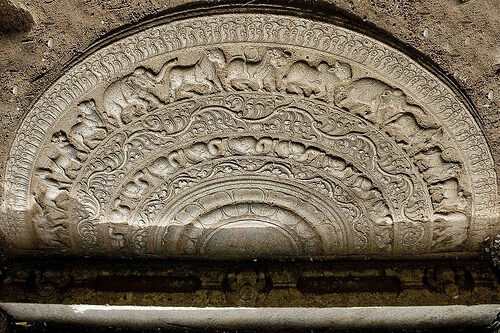The King is said to have built a hermitage for Nighanta ascetics near Gaminivapi. Here the Mahavamsa accidentally mentions another reservoir – Gaminivapi, identified as Karambewa reservoir in Anuradhapura. Did King Pandukabaya build this reservoir in the name of Deegha Gamini- his father/step-father? I feel that he was that kind of son- full of grace and loyalty!
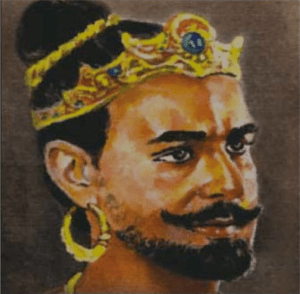
Carl Muller’s observation that building tanks is a truly Sin-hela invention is as interesting as it is plausible. Man-made tanks for irrigation of this magnitude are not seen anywhere else in the world.
“Let it also be said that even as the Aryans brought this knowledge of irrigation out of India, they never practised such skills there. Tank building is a distinctive feature of the culture of Lanka and the Sinhalese. India had nothing like it.” Carl Muller, Children of the Lion- Anuradhapura- pp 362-363
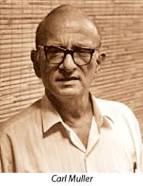
Main purpose of the was to provide water for the city population for drinking and bathing. The embankment of Abhaya Wewa is 5,910 feet long and 22 feet high. The slope of the embankment was found to be three horizontals to one vertical. Top of the embankment has a width of six to eight feet.
- L. Brohier was the first surveyor for British Ceylon during 1910-1949 who carried on his duties not only computing the length and breadth of land objects but also surveying the life and culture of its people from which he drew inspiration. Brohier comments on the Abhaya Wewa in his book Seeing Ceylon, thus:
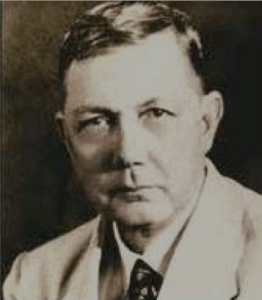
“Basawakkulam (Abhaya reservoir) lying in a shallow valley with its waters held up by an earth bund whose concave side faces up-stream claims pride of place as the oldest of the three Anuradhapura city reservoirs. (Nuwara Wewa, Tissa Wewa and Abhaya Wewa). Abhaya reservoir was built after Pandukabhaya, an intelligent young King assumed rule over the kingdom. There is nothing in the structure to indicate its antiquity, but if evidence be needed of the remarkable achievement of that early unnamed hydraulic engineer who designed it, there is proof that this structure remains unbreached even after the thrilling history of Anuradhapura, with its unique records of conquests, dynastic ambitions, regal triumphs and tragedies, had ended on the crest of a mighty wave of invasion 1200 years after the city was founded”. Seeing Ceylon, R.L Brohier (1965).
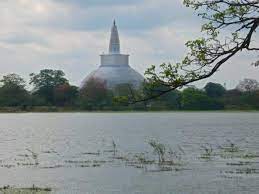
Muller refers to the demon kings “Cittaraja” and “kaalavela” throughout his book. Cittaraja was constantly with the King, guiding him and assisting him with him superhuman powers, according to Muller. Muller appears to have been guided by the Mahawansa chronicle when writing his Children of the Lion. Muller describes how the Great King declared Demon King Cittaraja to be the guardian of the Abhaya Wewa thus:
“Pandukabhaya told Cittaraja: ‘Do thou dwell at the lower end of the tank. A fitting abode will I construct you.’
The demon king’s eyes gleamed. ‘Then will I be the guardian of the waters and keep them ever at the service of the people’”
Demon beings including Cittaraja were honoured appropriately and proper abodes were built for them. The close association of King Pandukabhaya and the demon king Cittaraja is described by Muller thus:
“Year by year were appropriate offerings made to these spirit beings, and their dwellings regarded as shrines where one could seek their help and protection. Cittaraja was esteemed as in rank and bearing, and Pandukabhaya would invite the demon king to sit beside him, equal in place and height on festive days, where they would view the dancing girls, the conjurers and contortionists who performed for their pleasure.”
If that scene is not that of a cherished bond between a father and a loving son, then, I do not profess to know what is. Those who seek modern scientific proof in everything may discard the idea of demons, apparitions and bonds after death; however, we are looking into the lives of people that existed a very long time ago when modern science and its proponents were a long way from being born. This is where we will leave the sceptics and their sciences far behind and go with what we intuitively believe to be true.
King Pandukabhaya constructed two abodes (devales) in devotion to Cittaraja and Kalawela, one north of Anuradhapura and one in the Dimbulagla area. The devala constructed in the Dimbulagala area is said to have been in close proximity to the present day Dimbulagala temple, on the eastern side of it, according to legend. (The Dimbulgala Temple was as such, said to be the abode of Arahat Bikkhus from the time of the visit of the Arahat Mihindu Thero (in the time of King Devanam Piyathissa’s reign) right up to the time of the last Arahat Bikkhu, the Arahat Maliyadeva Thero- more on this later.)
With unprecedented prosperity and peace within the country, Pandukabhaya reign saw the migration of great sages and ascetics into the shores of Lanka. In this post Buddha- Mahavira era, Nighantas, Kumbhandas and many others arrived on the island and King Pandukabhaya did not exclude anyone. Buddhism was yet to be introduced to Lanka. India was in the middle of much chaos by 322 BC in the wake of the withdrawal westward by the armies of Alexander. The Mauryan Empire under Chandragupta Maurya was rapidly expanding their power westwards across central and western India, taking advantage of the disruptions of local powers. In this backdrop, peaceful, prosperous Lanka must have been a heaven sent for those seeking emancipation and contemplation.
Great King Pandukabhaya died in 367 BCE at the grand old age of 107 years. While living under the patronage of Chitraraja and Kalawela in a cave, Prince Pandukabhaya and Princess Swarnapali had a son by the name of Mutaseeva who took over the reins from Pandukabhaya to rule Lanka for the next 60 years- until 307 BCE. Old chronicles suggest the birth of yet another son by the name of Ganathissa by princess Swarnapali but I have not been able to find further information on this younger son yet.
King Mutaseeva (367- 307BCE)
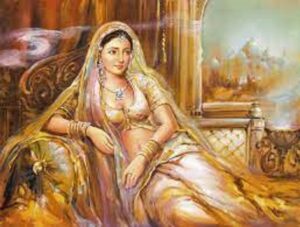
King Mutaseeva ruled for sixty years which was an unbroken peaceful era of the country. He was the creator of Mahamevnāwa Park (Mahameghavana, then) in Anuradhapura which is said to be the ‘only’ historical record of his ‘accomplishments’- that is, if we choose to ignore prosperity, stability and peace enjoyed by his subjects during his reign as not being an ‘accomplishment’ worthy of mention! At the time the Mahamevna was declared as the royal garden, ‘a great cloud, gathering at an unexpected season, brought vast rain’; hence the garden was named Mahameghavana (Garden of the Great Rain). The king created the beautiful Mahameghavana or Mahamevnāwa garden to become a soothing sanctuary of nature replete with fruit-trees and flowering-trees for the enjoyment of all his subjects.
Mutaseeva had ten sons and two daughters; Abhaya, Tissa, Mahanaga, Uttiya, Mattabhaya, Mitta, Mahaseeva, Sura Tissa, Asela and Kira and daughters Anula and Sivali. Several of his sons- (Devanampiya) Tissa, Uttiya, Mahaseeva and Asela were successors for King Mutaseeva.
King Mutaseeva’s second son Tissa ascended to the throne of Lanka at the time of his death on the sixth day of November 247 BCE. The first son, Abhaya was a tall, handsome youth whose love was sport and beautiful damsels who vied for his attention. Abhaya made no secret of his desire to be left out of the running for the crown and was relieved to learn that astrologers and other wise counsel to the King predicted Tissa to be the successor to his father. The ten brothers were said to be bonded to each other wishing for nothing but each other’s happiness; this was a major factor that ensured the peaceful atmosphere and prosperity that pervaded throughout Lanka during King Mutaseeva’s time.
The historical facts reveal that Sri Lanka and India had close social, political, economic and trade relations from times immemorial. During the lifetime of the Buddha, Sri Lankan history records that two leading traders namely Tapassu and Balluka arrived in Sri Lanka from India at Gokarnatitta Port, (now Trincomalee) along with Relics of the Buddha being some locks of Hair. They were instrumental in constructing the Dagaba (a dome like structure) known as Girihanduseya. This may be the first stupa built in Lanka before the official advent of Buddhism. This means that there were Buddhist settlements in this area before Arahat Mahinda’s arrival.
Remains of the Girihandu seya – Trincomalee
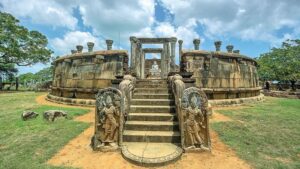
Of course, the official introduction of Buddhism took place during the reign of King Devanampiyatissa. As the king accepted Buddhism and the royalty became Buddha’s followers and main sponsors of Buddhism it was plain sailing for the Lankan populace to accept this philosophy. Buddhism became the State Religion from 250BCE onwards.
When Tissa was consecrated as King of Lanka, there were miracles witnessed in the sky. Illuminations of all sorts were seen and people rejoiced unequivocally. The Mahawamsa chronicle says that “deeply buried treasures and precious stones rose to the surface of the earth. Gems in ships wrecked near the island of Lanka ascended to the land. At the foot of the Chata Mountain (the hill on which the Talaguru Vihara is located near Galkumala) sprang three bamboo stems, in girth similar o a wagon pole. A creeper stem shone like silver…… eight kinds of pearls ….rose from the sea and lay on the shore like an embankment to a village pond. All this happened on account of the merits of Devanampiyatissa.” King Tissa was given the prefix to his name ‘Devanampiya’ meaning ‘loved by the gods’”.
It is during King Devanampiyatissa’s reign that Lanka experienced some landmark events which changed the entire history, language, culture, arts and crafts, literature and the governance of the island. Buddhism arrived in Lanka! By this time, Mayuran Emperor Asoka of India had fought the Kalinga wars which caused the slaughter of millions of people including Asoka’a brothers, and animals. After seeing the post-war devastation, Emperor Asoka turned to Buddhism with a vengeance.
Emperor Asoka, now called Dharmasoka on account of him embracing Buddhism and denouncing violence in any form, was keen to propagate his new found philosophy of non-violence throughout the world. The Third Buddhist Council (Dharma sangaayana) was convened in around 250 BCE at Asokarama in Pataliputra under the patronage of Emperor Ashoka. It was presided over by the elder monk Moggaliputta-Tissa and one thousand monks participated in the Council. The immediate result of the Third Dharma Sangayana was that first nine countries were selected to receive the message of Buddhist non-violence, Sri Lanka being one of them. The other countries that received the missionaries were Kasmira-Gandhara, Mahisamandala (Mysore), Vanavasi, Aparantaka (Northern Gujarat, Kathiawar, Kachch and Sindh), Maharattha (Maharashtra), Country of the Yona (Greeks), Himavanta (area in Himalayas), Suvannabhumi (Myanmar) / (Funan / Cambodia) / (Thailand). Nine organised groups each headed by an Arahath were sent to the nine countries.
By Ramanie de Zoysa (CA) – Gold Coast



